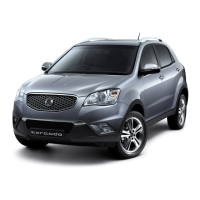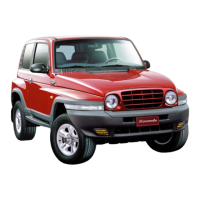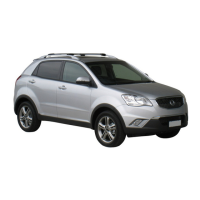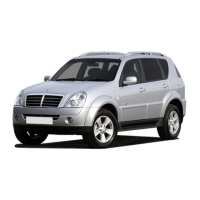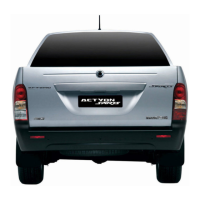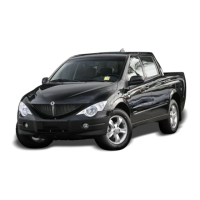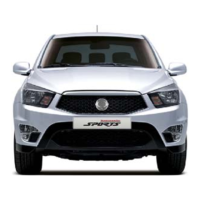6–10 IN CASE OF EMERGENCY
WARNING
When towing with a tow rope, control
of towed vehicle can be lost.
• Do not tow if the wheels, transmis-
sion, axles, steering or brakes are
damaged.
• Do not remove key from ignition
switch as this will make the vehicle
unsteerable.
CAUTION
When towing the vehicle with a tow
rope, the vehicle can be damaged.
To reduce damage,
• Use tow hooks only if no other
towing equipment is available.
• Only tow the vehicle from front.
• Keep tow rope clear of bumper.
• Ensure tow rope is securely fixed
to tow hook, at both ends. Check
by pulling on tow rope.
• Towing with a tow rope could
cause severe automatic transmis-
sion damage. When towing vehicle
with automatic transmission, use
flat bed or wheel lift equipment.
• When towing another vehicle use
the rear towing hook.
• Set the ignition in the ON position to
release the steering column lock and to
permit the operation of brake lamps,
horn and windshield wipers.
• Only the driver should be in the towed
vehicle to steer it and operate the
brakes.
• To prevent the entry of exhaust fumes
from the towing vehicles, close the
windows and place the air intake lever
to the recirculation mode.
• Drive off slowly and avoid jerky
movements.
EMERGENCY TOWING
For emergency towing when a towing
service is not available, your vehicle is
equipped with the towing hooks under the
front and rear of the vehicle for use with a
tow rope.
When towing your vehicle with the tow rope:
• Secure the rope to both of the towing
hooks under the front of the vehicle as
tight as possible.
• Switch on the hazard warning flasher
of both vehicles.
• Place the gearshift lever in neutral and
release the parking brake.
Front towing hooks
Rear towing hooks
K140_RHD_EN_06.p65 2004-11-11, ¿ÀÈÄ 4:0910

